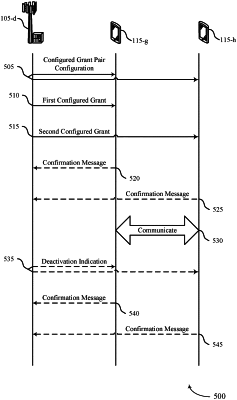| CPC H04W 72/23 (2023.01) [H04L 1/0061 (2013.01); H04W 72/1263 (2013.01); H04W 72/535 (2023.01)] | 30 Claims |

|
1. A method for wireless communications at a first user equipment (UE), comprising:
receiving, from a network entity, a configured grant pair configuration indicating:
a sidelink semi-persistent scheduling resource allocation for a sidelink channel for communicating with a second UE, and
a first configured grant for the first UE and a second configured grant for the second UE, wherein the first configured grant and the second configured grant, of a configured grant pair, each indicate:
an activation of the sidelink semi-persistent scheduling resource allocation for communications between the first UE and the second UE via the sidelink channel,
which of the first UE or the second UE is a transmitter for communications between the first UE and the second UE on the sidelink channel, and
which of the first UE or the second UE is a receiver for communications between the first UE and the second UE on the sidelink channel;
receiving, from the network entity, the first configured grant of the configured grant pair based at least in part on the configured grant pair configuration; and
communicating with the second UE on the sidelink channel according to the sidelink semi-persistent scheduling resource allocation based at least in part on the first configured grant.
|